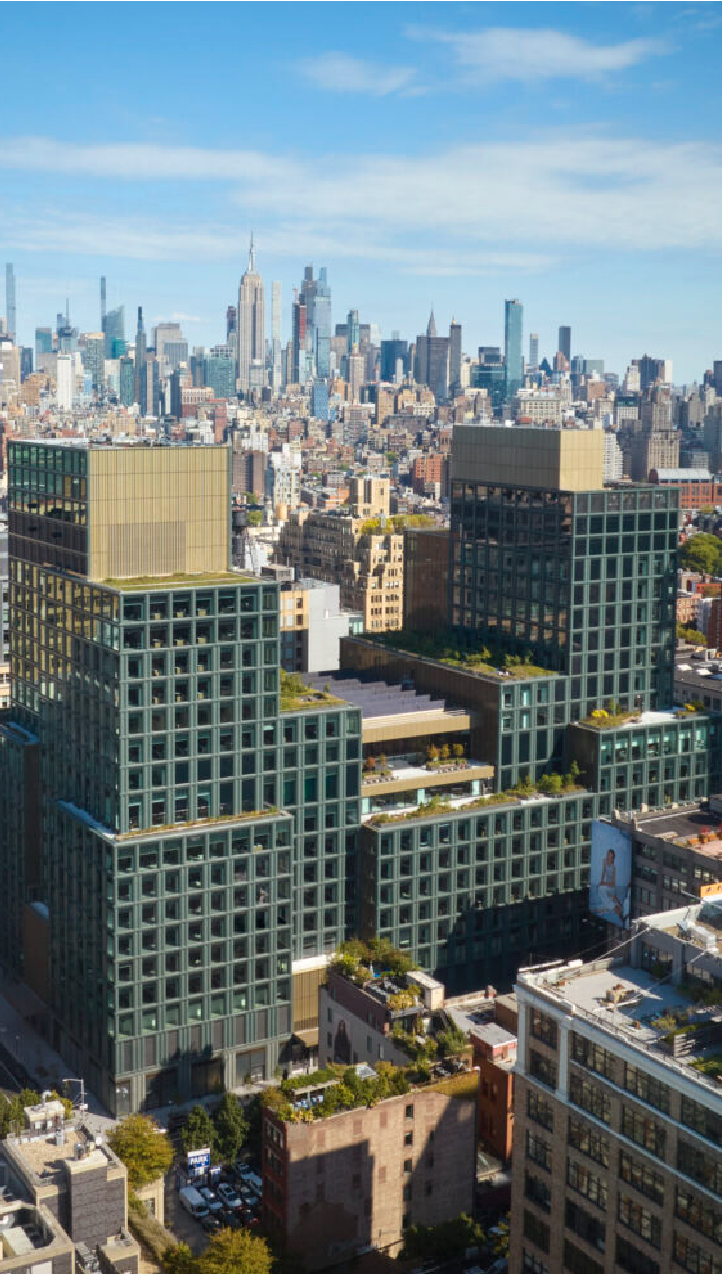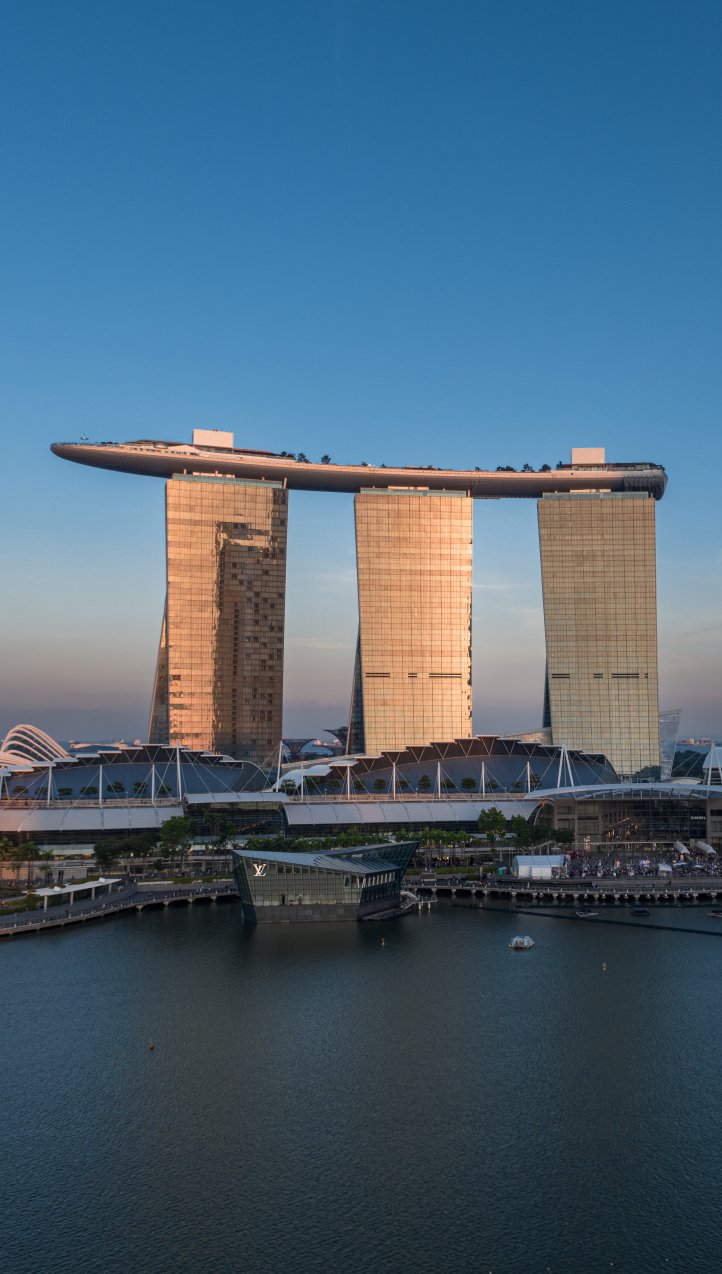The Genius Behind the Blueprints: Who Was Frank Lloyd Wright?
If you’ve ever admired a home that just flows with its surroundings, chances are you were looking at a design inspired by Frank Lloyd Wright’s legacy. Born in 1867 in Richland Center, Wisconsin, Frank Lloyd Wright was more than an architect—he was a visionary who redefined American home design. With a career that spanned over 70 years and more than 1,000 structures, Wright’s innovative ideas continue to echo in the homes we build and live in today.
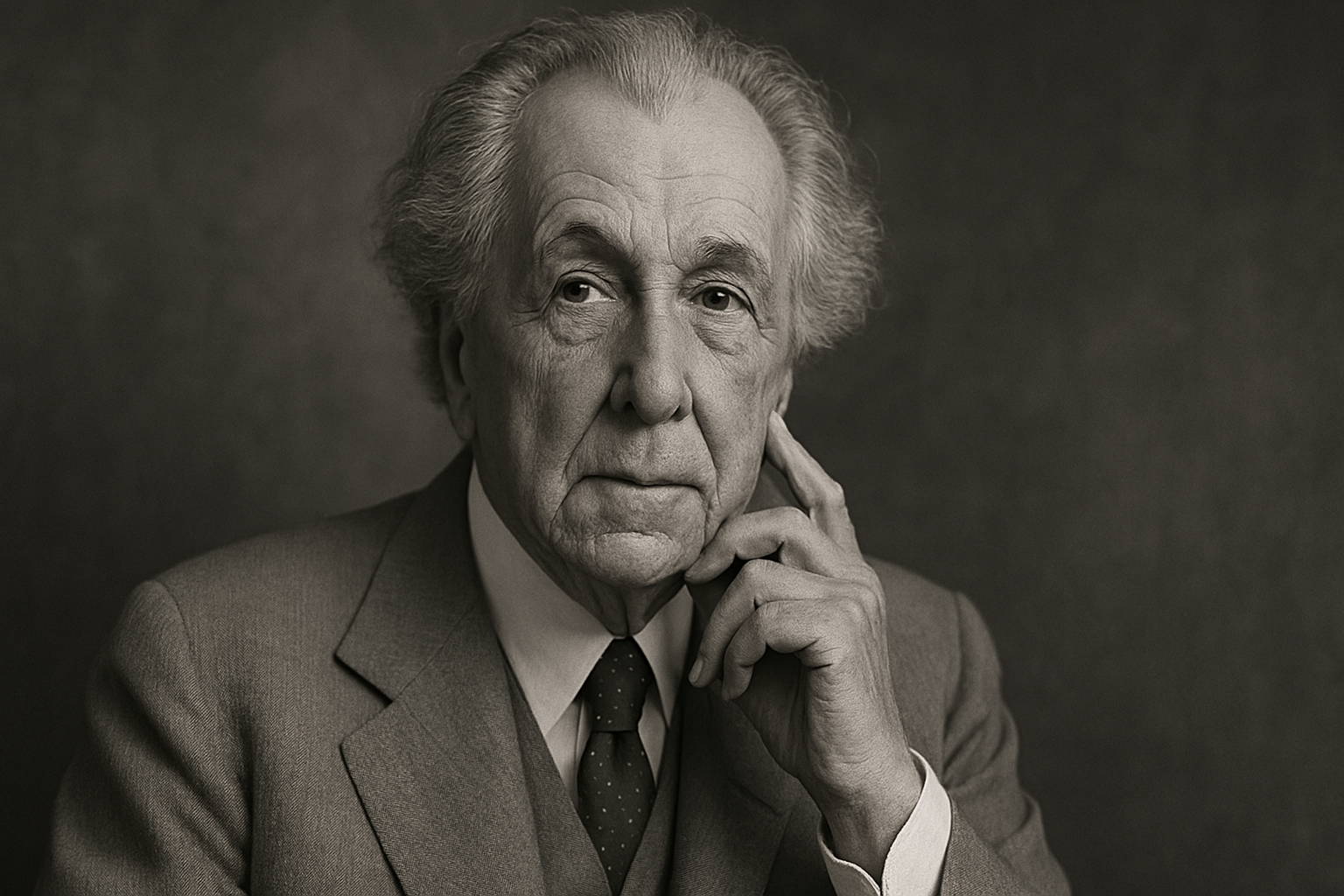
Wright studied civil engineering briefly at the University of Wisconsin but found his true calling in architecture, working under renowned architect Louis Sullivan—often called the “father of skyscrapers”—before launching his own practice. His philosophy of “organic architecture”—where structures exist in harmony with humanity and the environment—continues to inspire architects across the globe.
Beyond his buildings, Wright was a prolific writer and educator, founding the Taliesin Fellowship in 1932 to train future architects. His impact wasn’t limited to elite homes or landmark projects—he aimed to democratize design, ensuring even modest households could enjoy thoughtful, beautiful architecture.
Why Frank Lloyd Wright’s Work Still Shapes American Home Design
So, what makes Frank Lloyd Wright’s legacy so enduring in American home design? Wright didn’t just design buildings—he crafted experiences. His work introduced new ways of thinking about space, materials, and function that broke away from rigid European traditions.
Some of his key innovations included:
- Open floor plans: Wright pioneered flowing spaces, removing the idea of segmented rooms.
- Integration with nature: He believed buildings should exist in harmony with their surroundings.
- Built-in furniture: Custom-designed pieces maximized functionality and aesthetic coherence.
- Horizontal lines: Inspired by the American prairie, Wright used strong horizontal forms to root his designs to the landscape.
- Clerestory windows: Letting in light without sacrificing privacy, these small high windows became a hallmark of Wright’s style.
These ideas weren’t just revolutionary—they set the groundwork for what we now consider modern American home design.
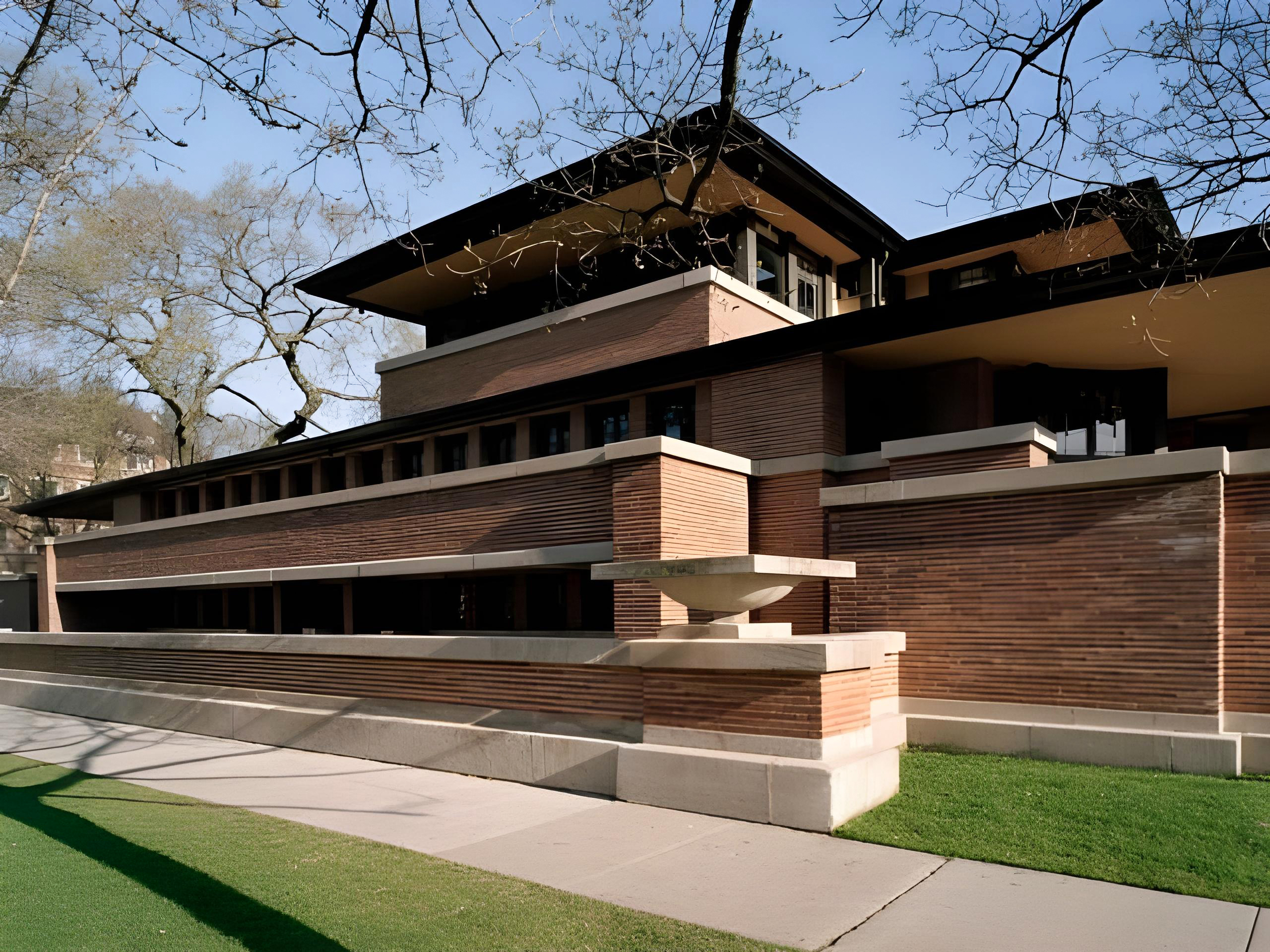
What Makes Frank Lloyd Wright’s Homes So Special?
Walk into any Frank Lloyd Wright house and you’ll notice something magical: they feel different. From the moment you enter, there’s a sense of purpose in every angle, every shadow, and every beam of natural light. That’s no accident.
Wright believed homes should be deeply personal and reflect the spirit of those who lived in them. No two of his homes are exactly alike. Materials were locally sourced, and layouts were meticulously planned to complement the site’s natural elements.
Some iconic features of his residential work include:
- Low-pitched roofs that mimic the horizon.
- Overhanging eaves for passive solar heating and cooling.
- Natural materials like wood, brick, and stone to reflect the environment.
- Floor-to-ceiling windows that blur the line between indoors and outdoors.
- Central hearths as a focal point for warmth and family gathering.
These homes didn’t just provide shelter—they nurtured a lifestyle rooted in peace, simplicity, and connection to the earth.
Transforming a Nation: How Frank Lloyd Wright Changed America
Frank Lloyd Wright didn’t just change architecture; he changed America. His ideas redefined what it meant to live well and live smart.
In the early 20th century, homes were often boxy, formal, and disconnected from the natural world. Wright tore down those walls—literally and metaphorically. By introducing more open, livable spaces and using natural materials, he offered Americans a new way to see their homes not just as shelters, but as expressions of their identity.
He even had a vision for affordable, beautiful homes for the average American. His “Usonian Homes” were economical, energy-efficient, and revolutionary for their time. These homes eliminated basements and attics, included radiant floor heating, and featured carports instead of garages. The influence of these designs is still felt in suburban neighborhoods all over the country.
In this way, Frank Lloyd Wright’s legacy lives on in how we approach sustainability, livability, and beauty in our homes.
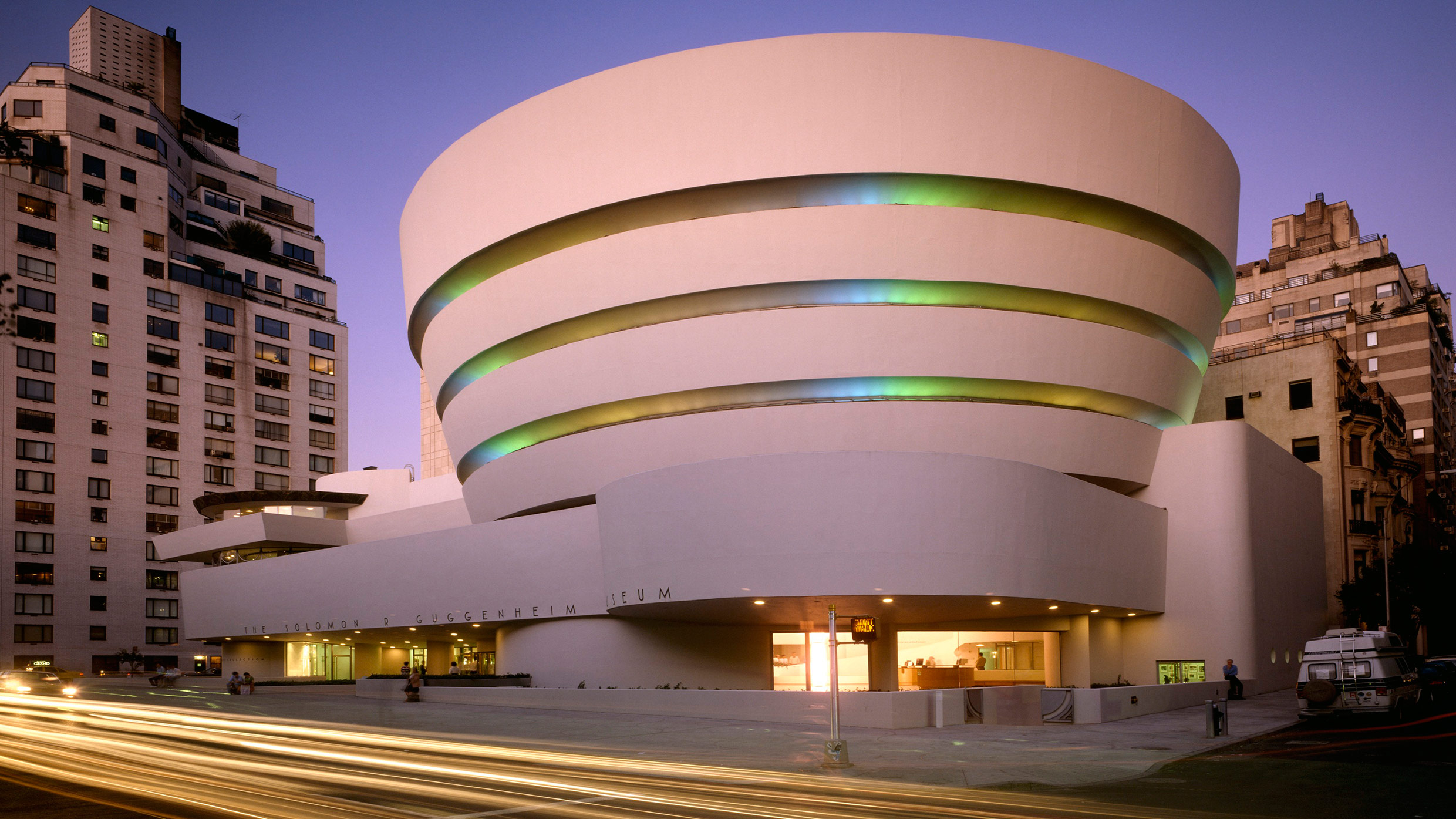
Wright and Modern Architecture: A Lasting Impact
When we talk about the foundations of modern architecture, it’s impossible not to mention Frank Lloyd Wright’s legacy. His work was a precursor to the minimalist movement, blending form and function decades before it became a trend.
His ideas helped shape the International Style, which became the gold standard for modernism worldwide. And while others leaned into industrial coldness, Wright stayed warm, human-centric, and uniquely American.
Today’s architects still borrow heavily from his:
- Spatial dynamics
- Emphasis on functionality
- Use of light and shadow
- Connection to place and environment
You can see his influence in everything from high-end custom homes to mid-century modern furniture. He set the tone for what it means to design for life, not just for looks. At Xpress Rendering, we carry that same philosophy into every visualization we produce. If you’re looking to bring a timeless, Wright-inspired feel to your next architectural project, get a personalized quote today—and let’s create something truly meaningful together.
One of the Greats: Frank Lloyd Wright’s Most Iconic Architectural Structure
Out of all his masterpieces, Fallingwater stands tall—or should we say, floats. Built in 1935 in Pennsylvania, this stunning home is perched above a waterfall and embodies everything Wright stood for.
Fallingwater is a tour-de-force in blending architecture with nature. With its cantilevered terraces, cascading geometry, and organic palette, it perfectly encapsulates Frank Lloyd Wright’s legacy. It remains a symbol of what architecture can aspire to: harmony, innovation, and emotional impact.
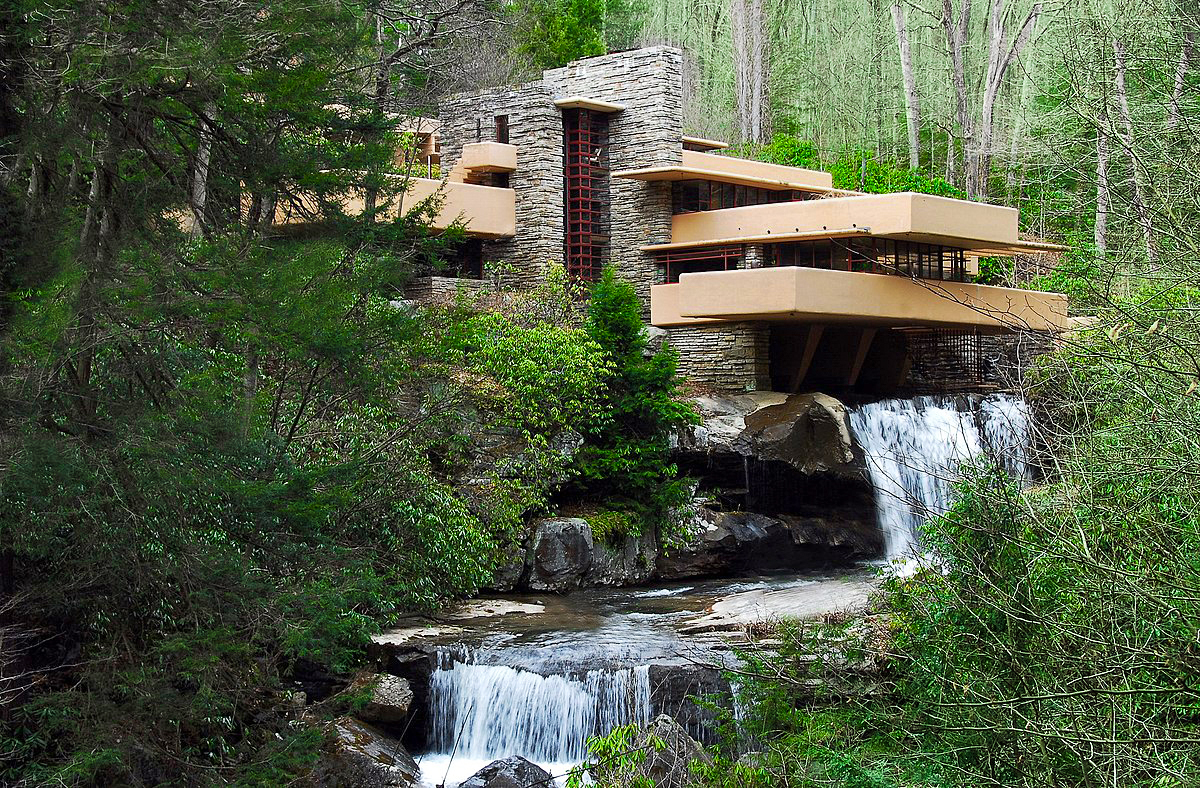
Other notable works include:
- The Guggenheim Museum in New York, with its iconic spiral form.
- The Robie House in Chicago, a prime example of his Prairie style.
- Taliesin in Wisconsin, both a home and a laboratory for his architectural experiments.
Each structure tells a story—about the place, the people, and the possibilities of design. If you want to learn more about Frank Lloyd Wright’s life, visit this link.
Geometry in Wright’s Designs: More Than Just Angles
Wright was obsessed with geometry—but not just as a visual tool. For him, shapes were symbolic, functional, and philosophical. He believed that geometry was the language of nature and, by extension, the language of architecture.
In his designs, you’ll see:
- Squares and rectangles for stability and structure.
- Triangles to suggest motion and direction.
- Circles to represent unity and wholeness.
- Hexagons and spirals for fluidity, motion, and flow.
He often designed entire buildings around a single geometric module, creating patterns that were both intuitive and harmonious. This method allowed him to control proportions, sightlines, and spatial experience like no one else.
In today’s homes, you’ll still find Wright’s influence in geometric balance, symmetry, and the clever manipulation of space—all contributing to that indescribable feeling of “rightness.”
How Frank Lloyd Wright’s Legacy Inspires Xpress Rendering
At Xpress Rendering, we believe in continuing the conversation that Frank Lloyd Wright started.
When we create 3D renderings for modern American homes, we’re not just drawing walls and roofs. We’re exploring how light dances through a room, how textures blend with nature, and how space can elevate everyday living. Just like Wright, we aim to design experiences.
Our team uses cutting-edge technology to bring your visions to life—rendering homes that not only look beautiful but feel right. Whether you’re designing your dream house, remodeling, or pitching a development, we bring clarity, artistry, and emotion to every project.
We pay attention to the subtleties Wright championed:
- Natural materials
- Integration with landscape
- Open and airy interiors
- Authentic storytelling through design
By embracing the principles that shaped Frank Lloyd Wright’s legacy, we ensure our work continues to reflect the very best of American home design. In doing so, we honor the past while building the future.
Ready to create something iconic?
Let Xpress Rendering transform your ideas into stunning visuals. Contact us today and see how your project can become part of a lasting legacy.
“The mother art is architecture. Without an architecture of our own we have no soul of our own civilization.” — Frank Lloyd Wright
